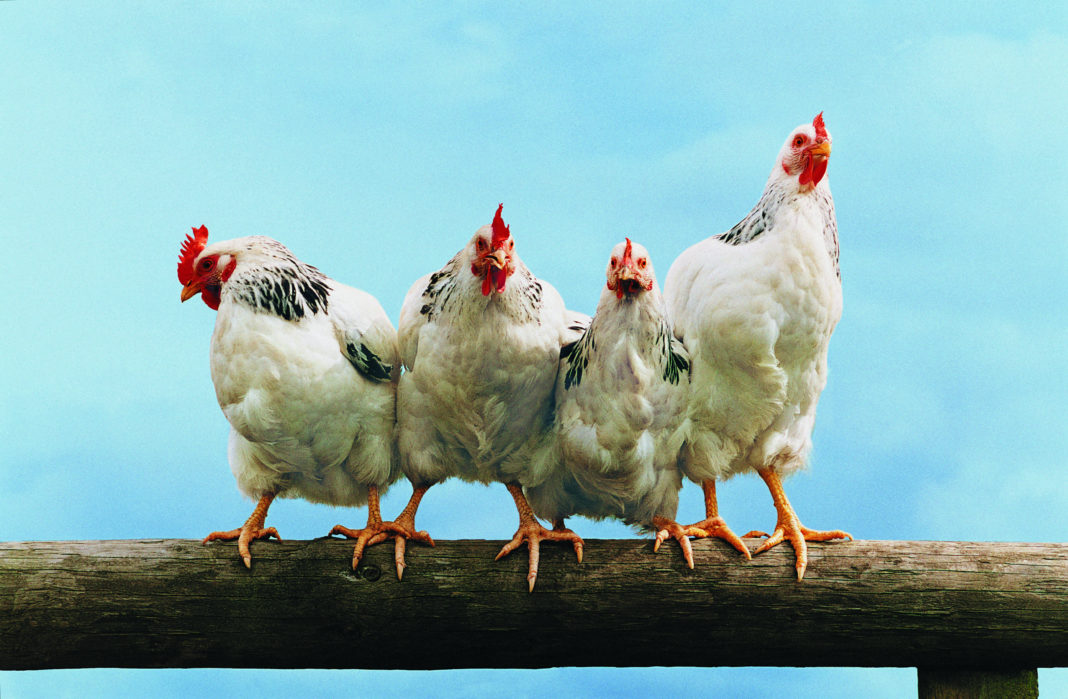For a poultry farmer to reap the full benefits of his investments, labor and time, a healthy flock is paramount.
Knowledge of what causes a particular disease and how it is transmitted or spread is the basis of proper treatment and control of diseases in poultry.
Constant monitoring helps to detect diseases early in order to treat and apply appropriate control measures.
There are several diseases and conditions that can cause very serious losses in a farm and every farmer should learn how to identify and deal with them for maximum profitability.
What causes disease in poultry?
There are three common agents:
1. Infectious micro-organisms like viruses, bacteria, fungi and various internal and external parasites. These cause specific diseases such as Fowl Typhoid, Newcastle Disease, Gumboro Disease, Fowl Pox and several others.
2. Non-infectious agents like chemical and physical factors, toxins and nutritional factors— lack, insufficient or excess nutrients. The most common of these nutritional factors are mineral and vitamin deficiencies. They affect growth and production where birds delay to reach expected weight and egg production drops. Eggs with soft shells may also be produced leading to other conditions like egg peritonitis and death of birds.
3. Breed, sex, immunity, environmental conditions such as air quality and ventilation, climatic conditions especially temperatures and wind, type of housing, space and equipment used for feeding and drinking among others.
Risk hotspots in a poultry farm:
New infections or diseases can enter a farm through various risk points. A farmer should watch out for these sources of infections and control them to ensure his farm remains disease-free. Keep the following at away.
- Sick birds and improperly disposed off carcasses of infected birds.
2. People (farm workers and visitors) from infected farms or pens in the same farm
3. Vehicles and equipment from infected farms
4. Contaminated materials such as feed bags, egg trays, litter material from brooders or other pens
5. Contaminated water and feed where sick and healthy birds are kept together
6. Infected chicks from a hatchery
7. Wild birds
8. Pests, rodents, flies and stray animals such as dogs and cats.
How can a farmer know there is a disease in the flock?
While specific diseases have specific and distinguishing clinical signs (symptoms), the early signs are usually non-specific and may help a farmer to tell that a disease is on the way. These include poor appetite, depression, huddling together especially in young chicks, ruffled feathers, ranting (making noises), coughing, sneezing, discharge from the eyes and nose, breathing problems and diarrhoea and deaths.
What a farmer should do in case of disease outbreak:
Immediately isolate affected bird(s) and handle them separately in every way, including feeding and watering.
- Provide different handlers for the sick and healthy flock or ensure the healthy flocks are handled first before moving to the sick birds.
- Ensure proper disposal of all dead birds as soon as possible.
The rest of the healthy looking flock should be closely monitored for any signs of infection. - Call a veterinarian or a qualified health provider for further action and assistance in terms of diagnosis and treatment.
- Avoid movement of birds or their products such as eggs from the farm to other farms until clearance of the disease is given by a veterinarian in authority.
- All personnel handling the sick birds should not visit other poultry farms to avoid spread of the disease.
- Do not introduce new birds into the farm during the period of disease outbreak or before clearing the old flock. Wait until there is complete clearance of the disease.
Treatment and control of poultry diseases:
While specific diseases should be given prompt and appropriate treatment and control measures, there are guiding principles that apply across the board.
- Always consult a veterinarian or a qualified and registered health practitioner before initiating any treatment or disease control regime for your flock.
- Bacterial infections are treated with appropriate antibiotics and could also be combined with other drugs. The farmer must ensure that the recommended dosage, duration of administration, route of administration and withdrawal period is strictly followed to achieve maximum benefits for the flock and consumers. Strict hygiene is the best method of prevention of occurrence of bacterial and other microbial diseases.
- Vaccination should be done for the diseases that are controlled using vaccines.
Viral infections have no curative treatment. They also predispose animals to other infections, particularly bacterial, because they lower the immunity of the affected birds. For this reason, viral infections are usually managed by antibiotics and vitamins that improve the immunity, boost appetite and prevent other opportunistic infections in birds. - Where poor management contributes to disease outbreak, the situation must be corrected.
Source: Daily nation
Did you love the story? You can also share YOUR story and get it published on Bizna Click here to get started.

